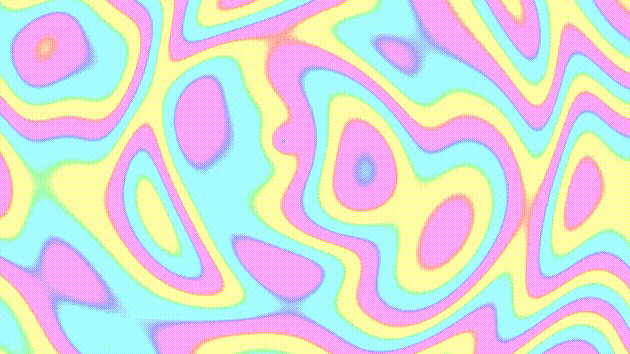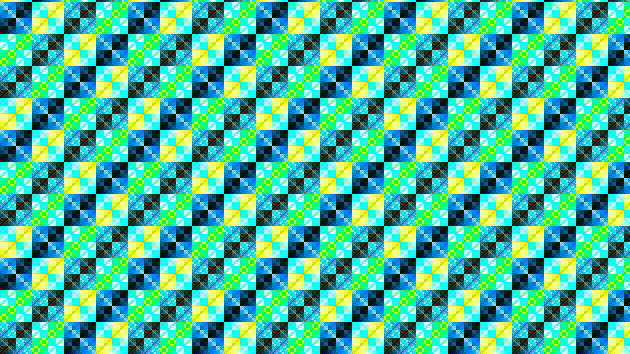I’ve spent the last two days writing psychedelic effects using pixel shaders in Shadertoy, and porting a few others that I’ve written in the past.




I’ve spent the last two days writing psychedelic effects using pixel shaders in Shadertoy, and porting a few others that I’ve written in the past.




One important part of the implementation of the EXT_external_objects and EXT_external_objects_fd groups of extensions for iris (the Intel gallium OpenGL driver) was the semaphore synchronization (EXT_semaphore extension). We’ve seen how the GL semaphores structs and functions that are introduced by this extension should be used in previous interoperability posts. In this post, I’ll try to describe the methods we’ve used to debug the EXT_semaphore implementation itself as well as the fences backend of the iris driver without getting into many driver internals details.
WebKit is an engine that uses multiple processes and multiple threads at runtime. There are some very useful generic instructions on how to debug one of its processes on Linux (with focus on the GTK port) in this wiki page. They work pretty well when WebKit is built using the Flatpak SDK and the scripts and gdbserver is installed in the system, but I faced some problems when I wanted to built WebKit with CMake having custom build and installation directories. So in this post, I’m going to describe the easiest way I’ve found so far to debug it when SDK is not being used and a gdbserver is not present in the system. I’ve found this simple solution after having tried a combination of tricks from the WebKit wiki instructions, GDB documentation and a discussion with my colleages at Igalia.
Continue reading An easy way to debug WebKit’s WebProcess with GDB
This post is a quick status update on OpenGL and Vulkan Interoperability extensions for Linux mesa3D drivers:
Both EXT_external_objects and EXT_external_objects_fd implementations for the Intel iris driver have been finally merged into mesa3D earlier today and will be available in next release! 🎉
It’s been a few weeks I’ve been experimenting with EGL/GLESv2 as part of my work for WebKit (Browsers) team of Igalia. One thing I wanted to familiarize with was using shared DMA buffers to avoid copying textures in graphics programs.
I’ve been experimenting with the dma_buf API, which is a generic Linux kernel framework for sharing buffers for hardware access across multiple device drivers and subsystems, using EGL and GLESv2.
More than a year ago, I had worked on the implementation of VK_EXT_sample_locations extension for anv, the Intel Vulkan driver of mesa3D, as part of my work for Igalia. The implementation had been reviewed (see acknowledgments) at the time, but as the conformance tests that were available back then had to be improved and that was work in progress, the feature was stalled, and I had forgotten about it… Until some weeks ago, when I realized that it has been merged into mesa! 🎉
As this feature is now available to the users, I’ve decided to write a short blog post to explain what this extension is about. You can read the extension’s specification if you are interested in learning how to use it and other details.
There’s a lot of documentation online about building Webkit/WPE on Linux. But as most instructions are targetting embedded platforms developers, the focus is on building Webkit with Wayland using the flatpak-sdk to automate and speed up the building process. As the steps I’ve followed to build it on my X11 system and run the Webkit/WPE MiniBrowser on a nested Weston were a bit different from the recommended ones I thought that a blog post about them might be useful to people trying to build WPE/Webkit in platforms lacking Wayland, flatpak, systemd, and modern Desktop Environments like the latest KDE and GNOME.
Be careful though: this is not the recommended way to build WebKit/WPE, only the alternative steps I’ve followed in my personal computer until I have access to a building machine! If you are not sure about what you want to do with WebKit/WPE please take a look at the recommended wiki instructions before you follow mine!
Vulkan conformance tests for graphics drivers save their output images inside an XML file called TestResults.qpa. As binary outputs aren’t allowed, these output images (that would be saved as PNG otherwise) are encoded to text using Base64 and the result is printed between <Image></Image> XML tags. This is a problem sometimes, as external tools are required to display them. In this post I’d like to share a few simple hacks I’m using to instantly display the CTS output image when I’m running a CTS test, hoping that they might be handy to more people who work on the drivers.
Continue reading A hack to instantly display the Vulkan CTS tests output
This is 10th post on OpenGL and Vulkan interoperability with EXT_external_objects and EXT_external_objects_fd. We’ll see the last use case I’ve written for Piglit to test the extensions implementation on various mesa drivers as part of my work for Igalia. In this test a stencil buffer is allocated and filled with a pattern by Vulkan and then it is used in OpenGL to render something else. We validate that the pattern has been imported correctly and we repeat the process for other depth-stencil formats.
In this 9th post on OpenGL and Vulkan interoperability on Linux with EXT_external_objects and EXT_external_objects_fd we are going to see another extensions use case where a Vulkan depth buffer is used to render a pattern with OpenGL. Like every other example use case described in these posts, it was implemented for Piglit as part of my work for Igalia‘s graphics team to check the extensions implementation of various mesa drivers.